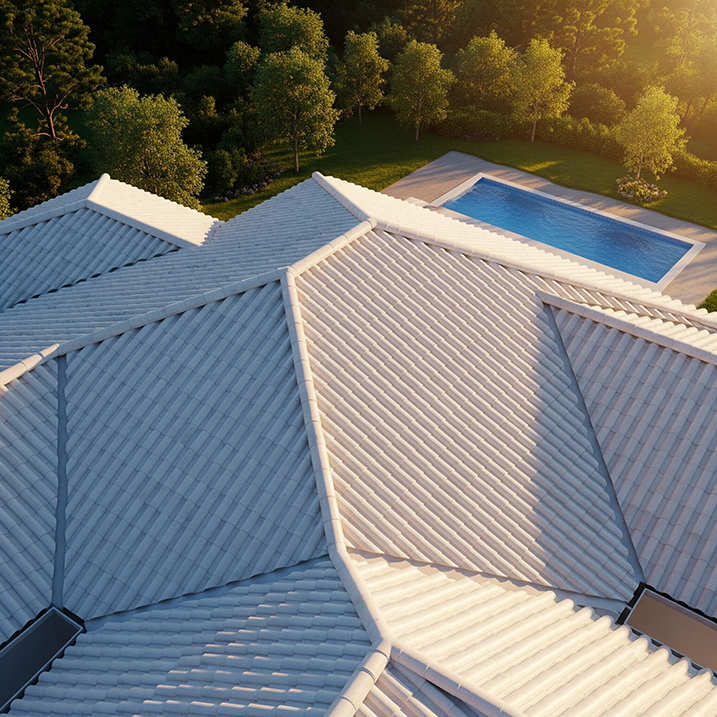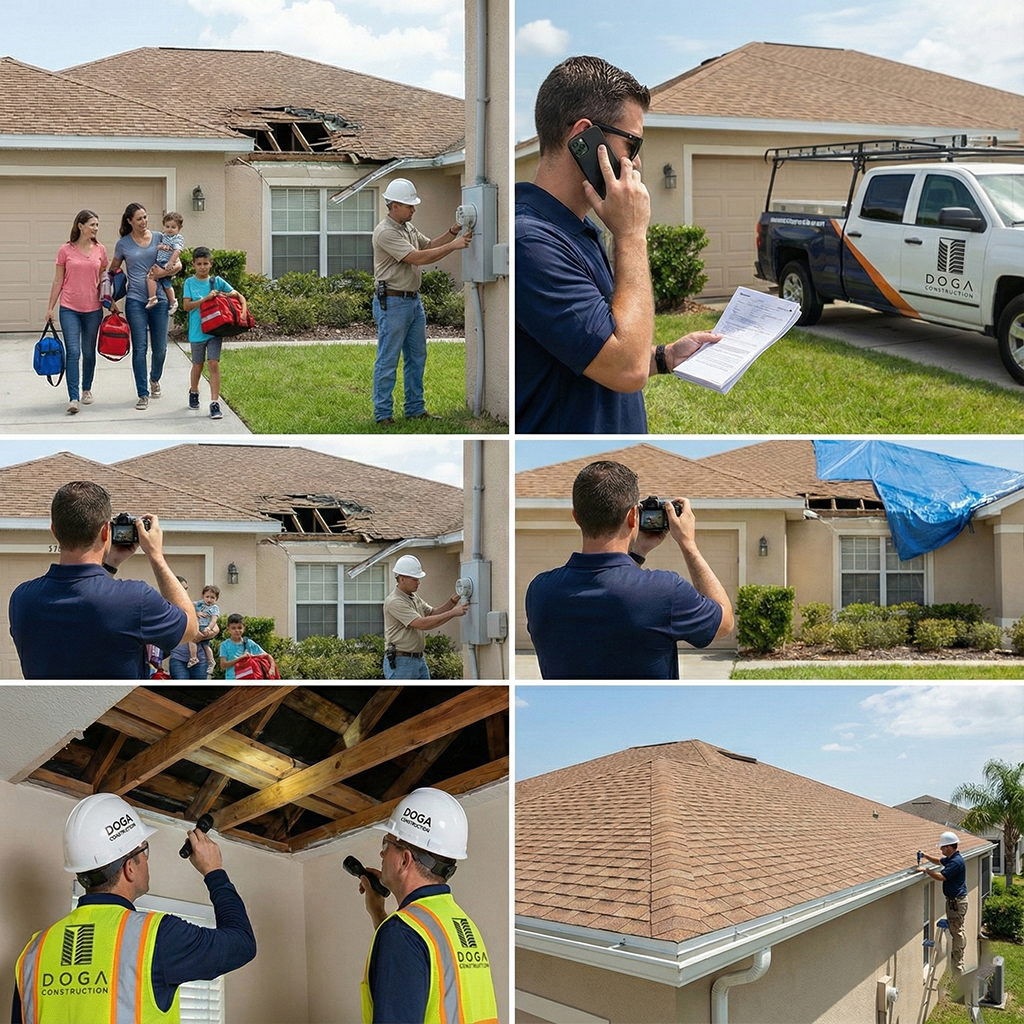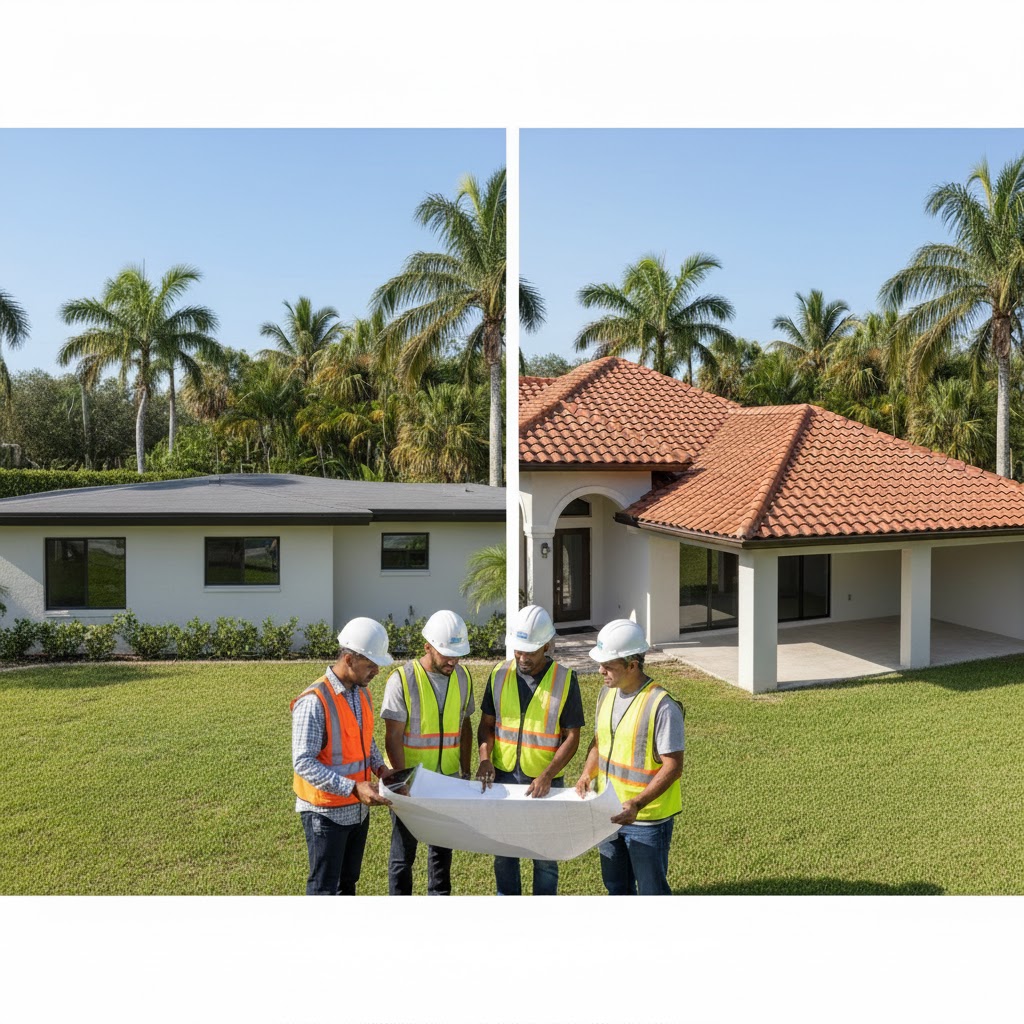🌡️ Introduction
The roof color impact in Florida In Florida, color isn’t just about looks — it’s a crucial factor in comfort and energy use. Choosing a light or dark color can impact indoor temperature, AC bills, and even the lifespan of your roof. This article explores how climate change and extreme weather make this decision more relevant than ever.
🌞 1. Why Does Roof Color Matter in Florida?
- Solar heat absorption: Dark roofs absorb more sunlight and transfer heat into the attic and living spaces. In contrast, light-colored roofs reflect solar energy, keeping your home cooler.
- Energy efficiency: Florida-based studies show that light or white roofs can reduce AC usage by 17% to 23% — and up to 35% during peak demand.
- Climate change impact: With hotter summers and prolonged heat, reflective roof colors help reduce urban heat islands and lower thermal stress on residential buildings.
🧾 2. When Should You Consider Changing Roof Color?
Key indicators:
- Your current roof is dark (black, dark brown, or forest green) and your AC bills are high.
- Your attic overheats, especially without shade or proper ventilation.
- You live in areas of extreme heat or high humidity.
In these scenarios, replacing the roof or adding reflective coatings can be an effective solution.
✅ 3. Color and Material Options
| Color / Material | Main Benefit | Considerations |
| White or light gray | High reflectivity, lowers temperature & usage | Stains and algae more visible |
| Beige or sand tones | Good balance between looks and efficiency | Popular in residential areas |
| Dark blue, brown, green | Attractive in certain styles | Absorbs heat, may raise energy use |
Light metal roofs and “cool roof” materials offer additional advantages by combining reflectivity with thermal performance.
⚙️ 4. Additional Factors to Consider
- Thermal emissivity: A roof must also release absorbed heat. High emissivity materials enable better nighttime cooling.
- Attic ventilation: Crucial to prevent heat and humidity buildup. It complements the benefits of a light-colored roof.
- Maintenance: Light colors may need more frequent cleaning due to mold or dirt in Florida’s humid environment.
🌍 5. Climate Change and Sustainability
As temperatures and extreme events increase, choosing reflective colors reduces thermal load not just at home but also on the power grid. This leads to lower collective energy use and cooler urban environments.
Additionally, white and light-colored roofs help mitigate the “urban heat island” effect in dense or coastal cities.
🧭 6. Is It Worth Changing Roof Color During Replacement?
Yes, and here’s why:
- If your roof needs replacement anyway, choosing a lighter color or reflective coating can offer immediate energy savings.
- The reduction in cooling costs may offset the extra investment — especially with reflective pigments or metal roofs.
- Modern materials offer light shades that resist algae and maintain thermal efficiency without sacrificing style.
🏁 Conclusion
Roof color has a direct impact on energy performance and should be considered in replacement decisions — especially in hot, sunny climates like Florida. Light colors and reflective materials reduce indoor temperatures, lower AC costs, and offer long-term structural and environmental benefits.
If you’re replacing your roof, evaluate the color’s thermal reflectance and ensure proper attic ventilation and high-emissivity materials. Every smart choice adds up to better comfort, savings, and sustainability.
more news in www.dogaconstruction.com



